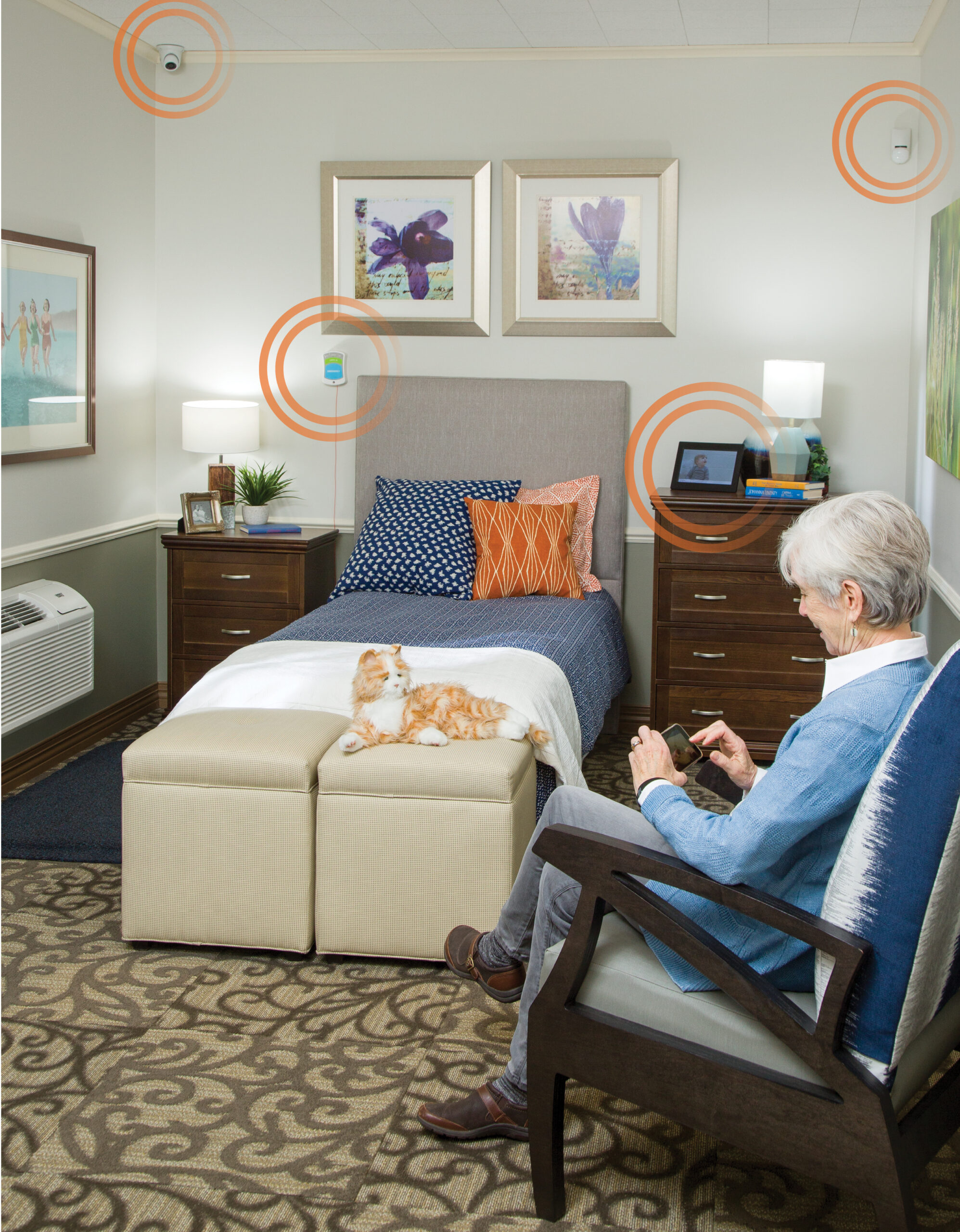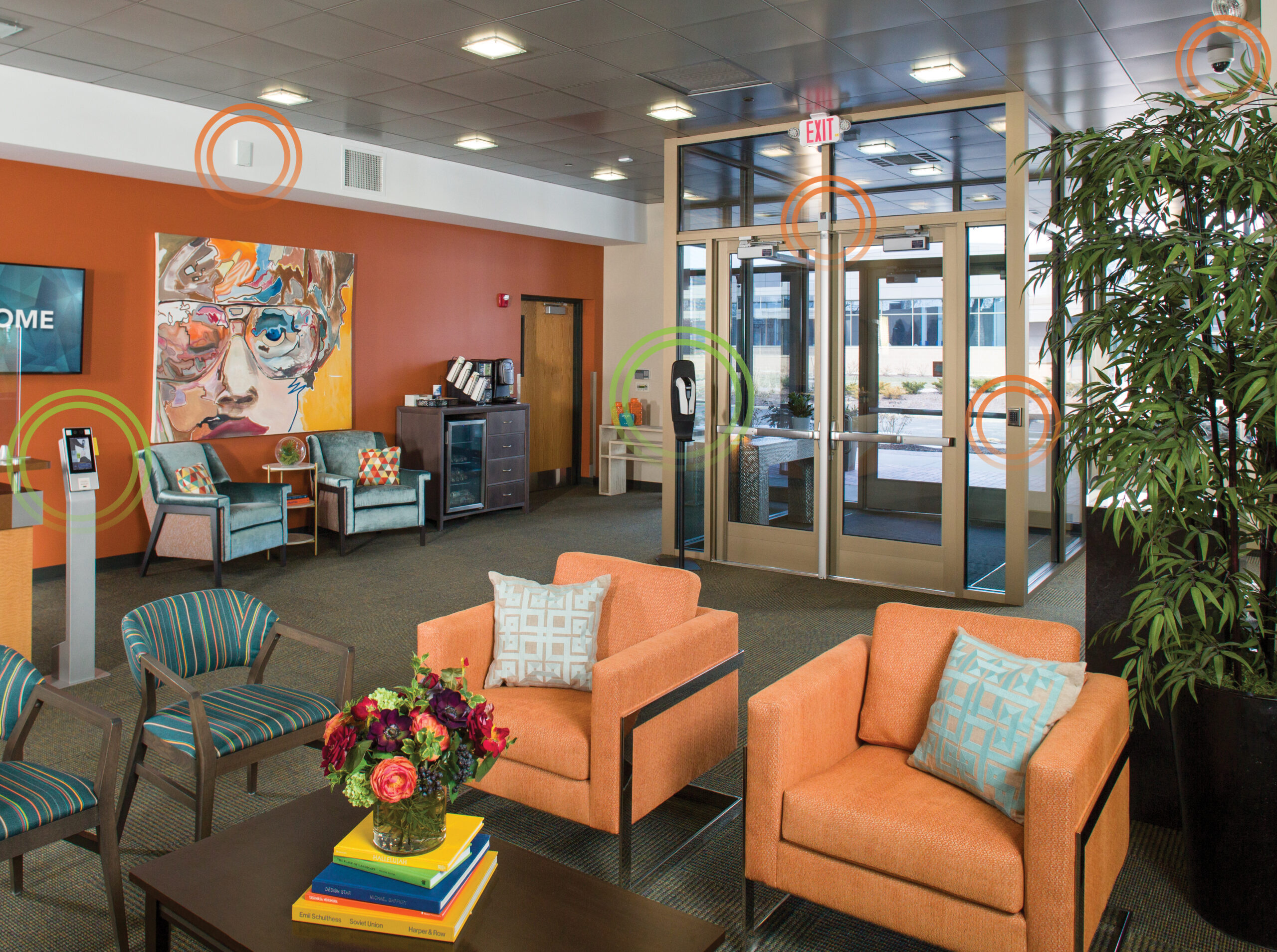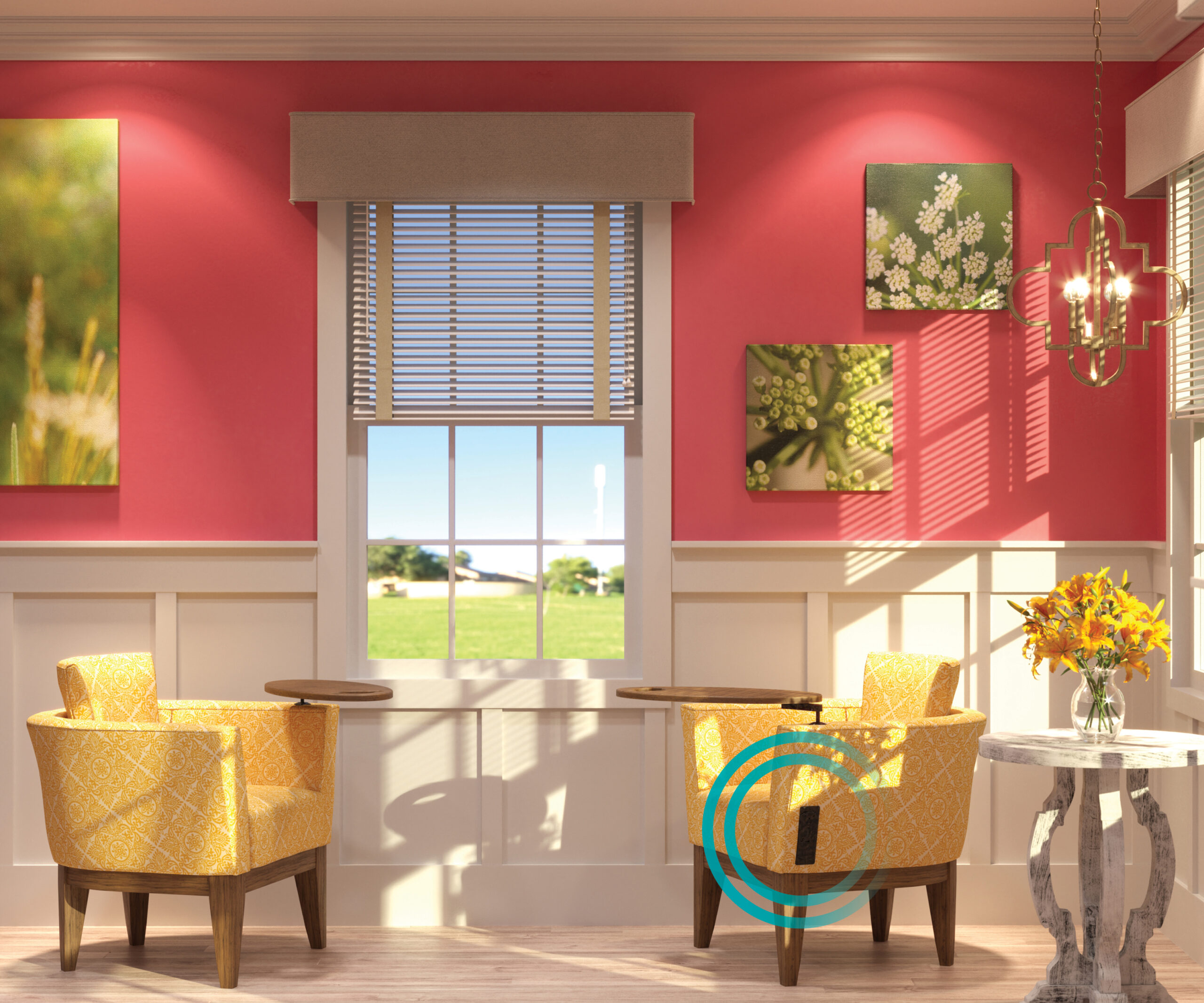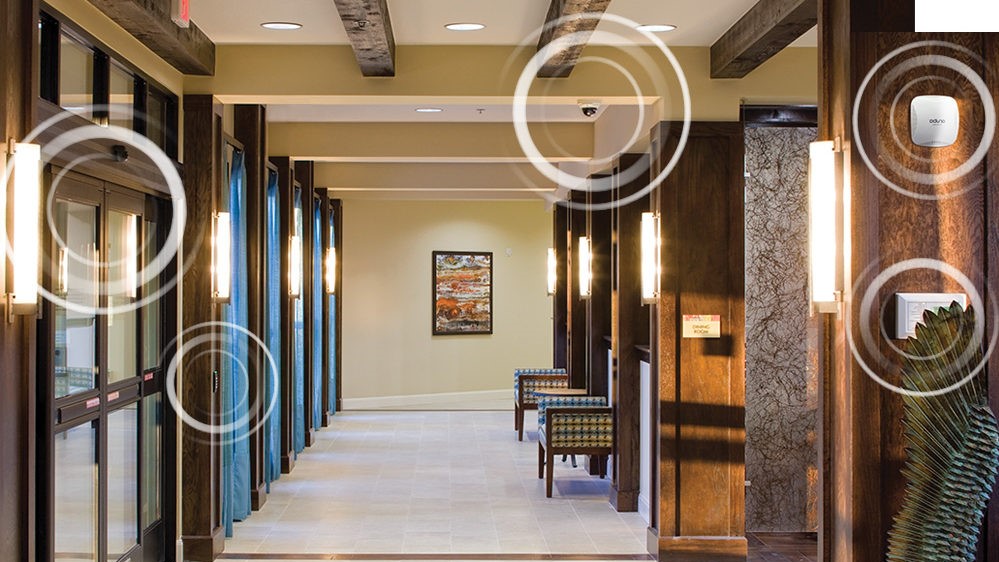When it comes to Senior Living industry trends, more designs are incorporating technology to ensure communities are ready for the future of care. Staying up to date on next-gen technology has many benefits, including staff efficiency, resident safety and marketability.
Current resident populations are demanding more tech-enabled environments, and that demand will only grow when baby boomers reach Senior Living communities. According to the United States Census Bureau, right now about 10,000 baby boomers turn 65 every day — by 2030, the entire generation will reach this age.
Staying connected has never been more important, and the dawn of “smart” living environments are shortening the technology adoption curve for congregate living settings. Seniors have more access to the outside world through things like social engagement apps and mainstream social media than previous generations, and prospective residents are demanding this type of connectivity to keep their independence and accessibility when they move into a Senior Living community.
In fact when we asked seniors considering senior housing what top technology solutions they expected to be included in residential pricing, High Speed Internet was their top choice.*
This is a trend made more prevalent because of separation from family and friends during the COVID-19 pandemic. Seniors now view virtual connectivity as a lifeline to their loved ones. Their primary means of communication and social interaction is dependent on stable Wi-Fi.
Knowing these demands, be sure to leverage the benefits of technology in every room of a community.
Technology Tips for Resident Rooms
Resident rooms are technology hubs – both for caregivers and residents. Consider the necessary clinical technology as well as any personal electronics the resident may bring into the room.
- Keep residents safer with artificial intelligence fall detection technology. Falls have increased 20% during the pandemic1, but SafelyYou’s fall detection technology has shown strong results – up to 40% decrease in falls and up to 80% decrease in ER visits.2,3 This leads to a doubled length of stay in Memory Care communities, translating to an additional $100,000 in revenue for a 30-bed memory care unit in only six months.4
- Help residents stay connected with friends and family with strong Wi-Fi network infrastructure, which has quickly become a must-have utility for America’s Seniors and their families.

- Real Time Locating Systems, like CenTrak’s TruView platform, enhance safety and security through advanced locating, contact tracing and roaming and wandering protection, all through a single wearable device.
- Look for technology that creatively uses voice assistants and voice automation, like RCare’s nurse call system that allows residents to use Alexa to request care assistance.
- Get ahead of the trend and opt for a 40” or 43” resident room television. Need a TV for a semi-private room? Consider a Long Term Care TV, which not only extends warranties and provides longer run time but also eliminates interference issues with 2 or more remotes in a room.
- Motion-sensing floor lighting can help prevent falls in the middle of the night by illuminating walking paths.
- Conceal cords with charging stations in drawers and cabinets. Place pop-up outlets in desks or countertops, or choose furnishings with built-in USB ports.
- Use mirrors with LED lighting that is more efficient, longer lasting, and offers a range of lighting styles, like strong, bright light during the day and softer light at night.
Technology Tips for Lobbies
Entrances, foyers and lobbies are also great spots to consider adding tech. Make a great first impression with elevated design and technology for infection prevention. Try including these technology systems:
- Thermal Temperature Scanning – prevent infection spread by capturing guests’ temperature and screening question responses.
- Needlepoint Bipolar Ionization – improve air by reducing certain viruses and bacteria, such as inactivating up to 98.3% of SARS-CoV-2 in 30 minutes.5
- Access Control – bolster building security plans with a smart security system using ID badges and fobs. Understand who is entering or exiting the community and allow or deny access based on a person’s need to be in a specific area all with a computer or smartphone.
- Digital Signage – make an impression by featuring a digital sign in the lobby with information about the community like daily activities, meal information and more.
- Wander Management – safely foster resident independence with systems featuring resident-specific door locking options based on individual care needs.
- Video Surveillance – keep an eye on potential security concerns or use the latest in artificial intelligence to quickly search video in real or recorded time to see and confirm events

Technology Tips for Multipurpose Rooms
Because a multipurpose room serves so many functions, it’s key to equip it with technology that helps staff facilitate whatever the day has in store. Consider what the programming needs are so you can help you make sure technology is seamlessly incorporated into the design process from day one. Here are tips for tech-friendly multipurpose rooms:

- Since newer furniture can feature built-in power outlets, ensure the furniture layout will accommodate electric and bandwidth connectivity.
- During construction, keep outlet location as flexible as possible until after the millwork is complete so outlets don’t interfere.
- Include flexible technology that’s easy to hide away depending on the use of the space. Add portable furniture and electronics like wireless mics, motorized drop-down screens, portable speakers on stands, projectors on carts and other technology that can facilitate special events.
- Make sure your wireless network covers the multipurpose room, and if there is an exterior spillover area, make sure the WiFi signal reaches that space as well. Solid furniture, like a cabana, can be equipped with WiFi boosters.
Technology Tips for Theater Rooms
Outfitting theater rooms with the latest technology can help guarantee these destination spaces remain popular among residents. Follow these tips for immersive theaters:
- Create a dynamic experience by adding a popcorn machine, projector, appropriate lighting, electronic curtains in front of the screen and speakers in the walls with architectural detailing to hide them.
- Consider the viewing angle that best suits the shape of the room. Seniors’ eyesight is more limited, especially peripheral vision, so the room layout will need to support more direct sight lines.
- Include electronic room darkening shades if there are windows in the theater.
- Install an assisted hearing system for seniors who are hard of hearing.
- Avoid multi-channel surround sound. An immersive listening experience is great, but separating sound means seniors will miss some of the audio. Instead, send all sound through all speakers so everyone can hear all of the audio accompanying the video.
* Survey completed by Qualtrics in partnership with the Developers Collective
The Bottom Line: Tech-Savvy Tips for Senior Living
Need help integrating new technology into a community? Technology can often be overlooked, under budgeted or left to the last minute. Contact our technology design experts by filling out the form below. We can help you weave-in tech early in the design process, so it will all go smoothly.
Not ready to start your technology design project just yet? Discover more Senior Living Design trends.
If you are an interior designer, contact our Designer Link team for all your technology design and procurement needs.
